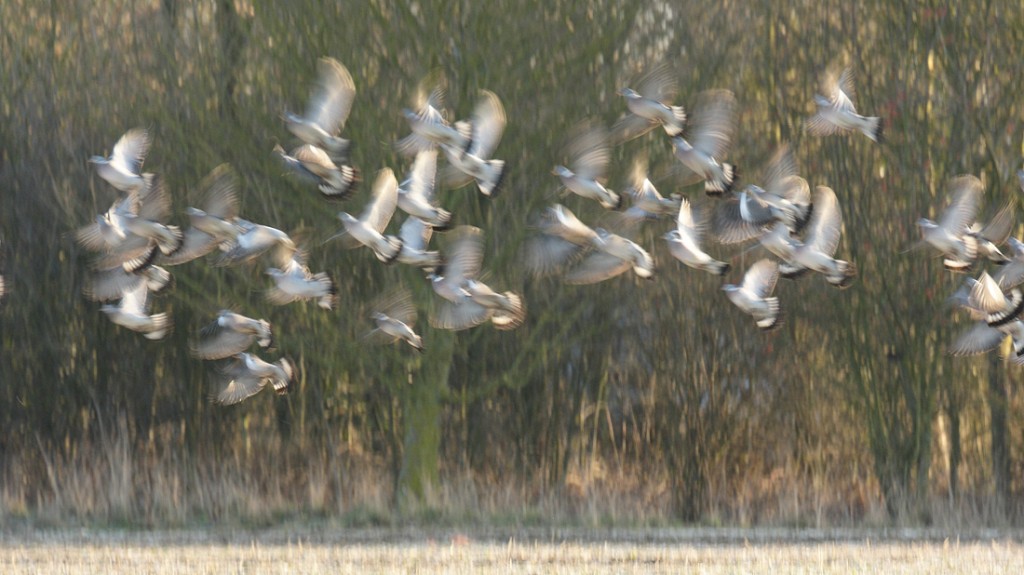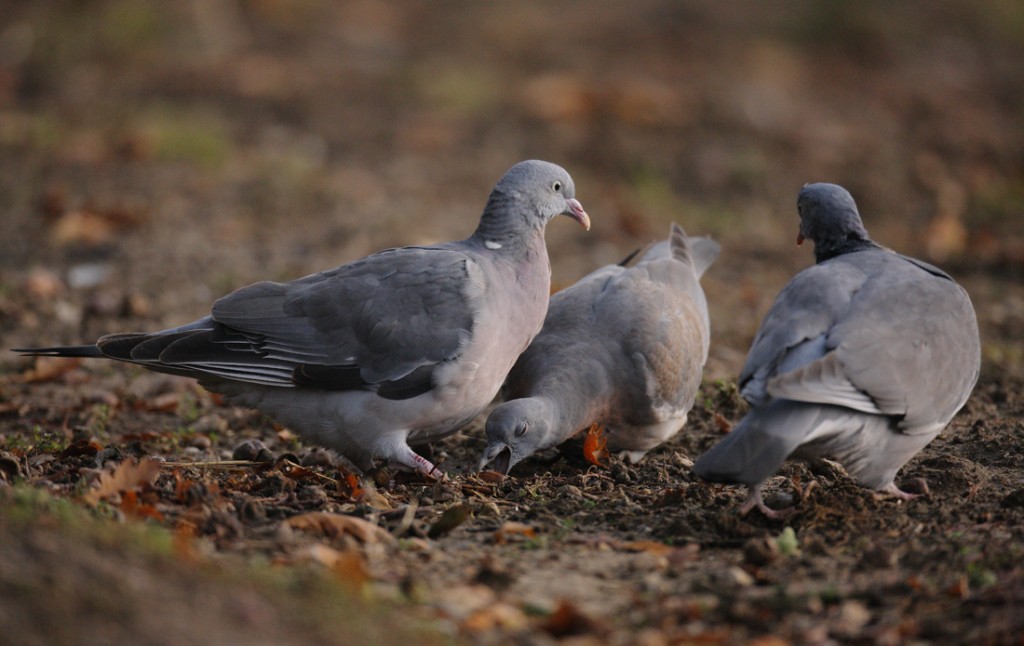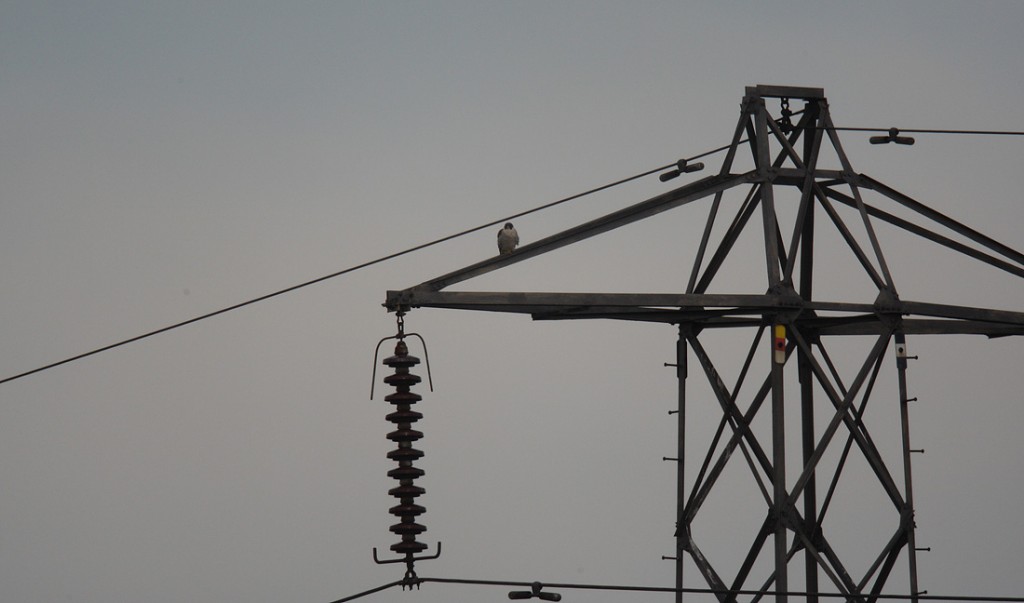A wood pigeon is often sitting on the fence by our backdoor even though we are walking in and out only a few metres away. Pigeons are also happy to sit eating under the bird feeder when we are in the garden, even the dog does not scare them. However the same birds will fly away instantly when they see us outside the village.
Wood pigeons are clever, adaptable and learn from each other. They can breed most months of the year, vary their diet depending on what is available, and are very mobile. Many pigeons in the large winter flocks in the East of England have come over from Europe. They come for two main reasons; oilseed rape and milder weather.
Oilseed rape is an important break crop on arable Suffolk farms. It is sown just after harvest, often in late August, and grows slowly all winter before shooting away in the following spring. The growing rape plants are a favourite winter food for pigeons and a flock can strip a field of rape to bare stalks in a few days and seriously effect the crop yield at harvest.
From late August gas-powered bangers appear in rape fields and for nearly 9 months of the year much of Suffolk resounds to their repeated bangs. During autumn the pigeon population is small and damage to rape seedlings is low. The local birds have learnt that the bangs are harmless. They, and most wildlife, ignore them and even the really big guns used to deter birds roosting in woodland are ignored. These canons resound like artillery across the countryside in the early morning and evening. The main effect is to scare walkers, horse riders and wake up late sleepers.
As winter starts to bite the large flocks of pigeons start to come in from Europe in search of food and warmer weather. These migrants mingle with local birds, quickly learning that the bangs are annoying but harmless. If the pigeons move at all they just fly gently over to the next field of rape to feed. The guns alone lead to more crop damage, as the birds need to eat more to power their flight between fields. Extra guns and bangs have no deterrent effect any more.
Wood pigeons are clever and do learn, but they are not super intelligent; they learn slowly and their default behaviour is to fly away fast from unexpected danger. Gas guns can be effective if they are introduced later in the winter when the large flocks arrive. Kites that imitate birds of prey are very useful if moved around the rape frequently. Close to my village a Peregrine falcon has been a frequent winter visitor and the ultimate deterrent. The peregrine clears the pigeons within a 1 km radius when he is sitting on his pylon perch. Sparrow hawks also heavily target pigeons during the winter scattering them when they swoop over a hedge. Encouraging walkers also helps, the pigeons never know if the walker might have a shotgun.
Wood pigeons are a major pest and need to be managed. However, over reliance on gas guns is becoming increasingly ineffective. A more random mix of human deterrents and encouraging natural predators is more successful in protecting vulnerable winter rape fields. But at the moment the incessant banging in parts of Suffolk increases and the bird brains are winning out.


